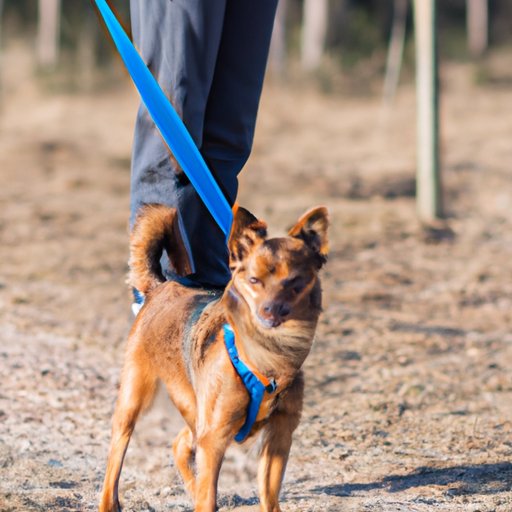
Introduction
Walking your dog on a leash is an important part of their daily exercise and can also help with behavioral issues, such as excessive barking and chewing. However, leash training can be challenging, especially for new dog owners. This article will explore tips and techniques to help train your dog to walk on a leash.
Start with Basic Training
Before beginning leash training, it’s important to lay a foundation of basic training commands. Your dog should understand basic commands such as “sit,” “stay,” “come,” and “leave it.” This foundation will help them understand what you expect from them during leash training.
For example, by teaching your dog to “come,” you can quickly reel them in if they get too far from you on their leash. By teaching your dog to “stay,” you can reinforce good leash manners by having them stay close to you while walking.
Basic training will also help your dog develop self-control, which is essential for leash training. When your dog understands that they must listen to your commands, you can guide them with greater efficiency.
Use Positive Reinforcement
Positive reinforcement means rewarding your dog for good behavior. This training method is effective because dogs are motivated by rewards, such as treats or praise. Positive reinforcement creates a positive association with training and will encourage your dog to continue exhibiting good behavior.
When leash training your dog, reward them with treats or praise when they walk calmly beside you. If your dog pulls on the leash, stop walking and wait for them to calm down. When they do, reward them with treats or praise. This will encourage them to follow your lead and stay close to you on their leash.
Choose the Right Type of Leash
There are different types of leashes available, including retractable, nylon, and leather leashes. For leash training, it’s best to use a short, sturdy leash that gives you greater control over your dog. A shorter leash will make it easier for you to guide your dog and correct their behavior when necessary.
A good option is a standard nylon or leather leash that is approximately six feet long. These leashes are durable and provide enough length for your dog to explore while keeping them at a manageable distance from you.
Walk Your Dog at the Right Time
The time of day you choose to walk your dog can affect their ability to learn and concentrate during leash training. Ideally, you should walk your dog when they are alert and focused, rather than when they’re tired or easily distracted.
Morning walks are often a good choice because your dog is well-rested, has an empty bladder, and is more likely to pay attention to you. Avoid walking your dog during the hottest part of the day or when they’re likely to encounter a lot of distractions, such as other dogs or children in the park.
Gradually Increase Distance
When you start leash training your dog, begin by walking short distances. As your dog becomes more comfortable with the leash, gradually increase the distance you walk. This will prevent overwhelming your dog and encourage them to trust you while walking on a leash.
A good way to gradually increase distance is to start by walking around your yard or neighborhood. Once your dog is comfortable with this, gradually increase the distance over several days or weeks until they’re ready for longer walks in new environments.
Use a Harness
For leash training, harnesses are recommended over collars. A harness will give you greater control over your dog and prevent them from choking or injuring their throat if they pull on the leash.
There are different types of harnesses to choose from, including back-clip and front-clip. A back-clip harness is best for small dogs or dogs with good leash manners, while a front-clip harness is better for bigger, stronger dogs who are more likely to pull.
Be Patient and Consistent
Leash training takes time and patience. Your dog will not learn how to walk on a leash overnight, so it’s important to be consistent with your training over several weeks or months.
Consistency means enforcing the same rules and expectations every time you walk your dog. If your dog pulls on the leash during one walk but not the next, they will become confused and may not understand what you expect from them. By being patient and consistent, you will help your dog develop good leash manners and become a well-behaved companion.
Conclusion
Leash training your dog is an essential part of responsible pet ownership. By starting with basic training, using positive reinforcement, choosing the right type of leash and harness, walking your dog at the right time, gradually increasing distance, and being patient and consistent, you can guide your dog to become a well-behaved and obedient companion.
Remember, it’s important to encourage good behavior and reward your dog for their hard work. With these tips, patience, and persistence, you can successfully train your dog to walk on a leash.




